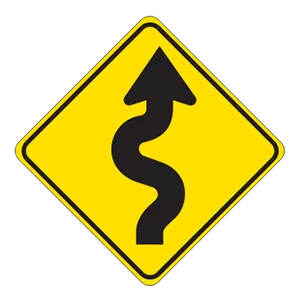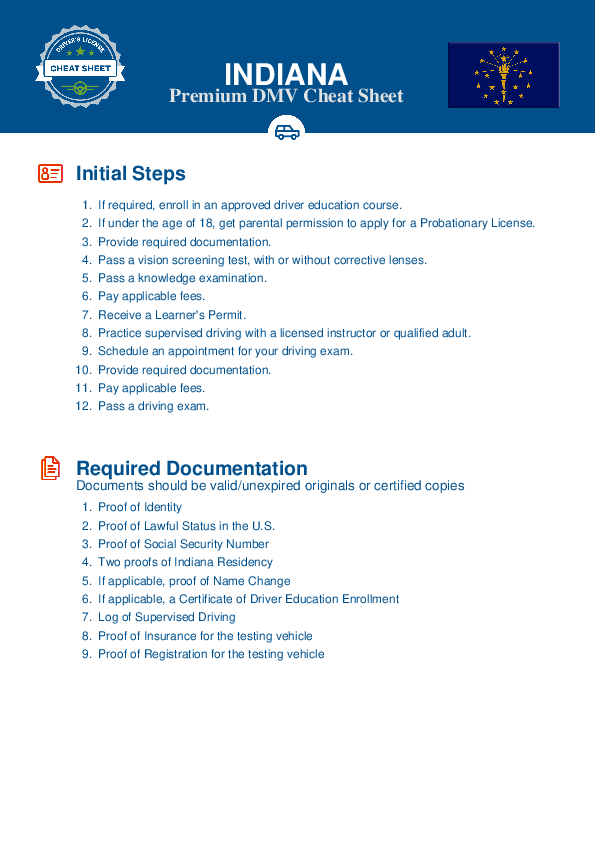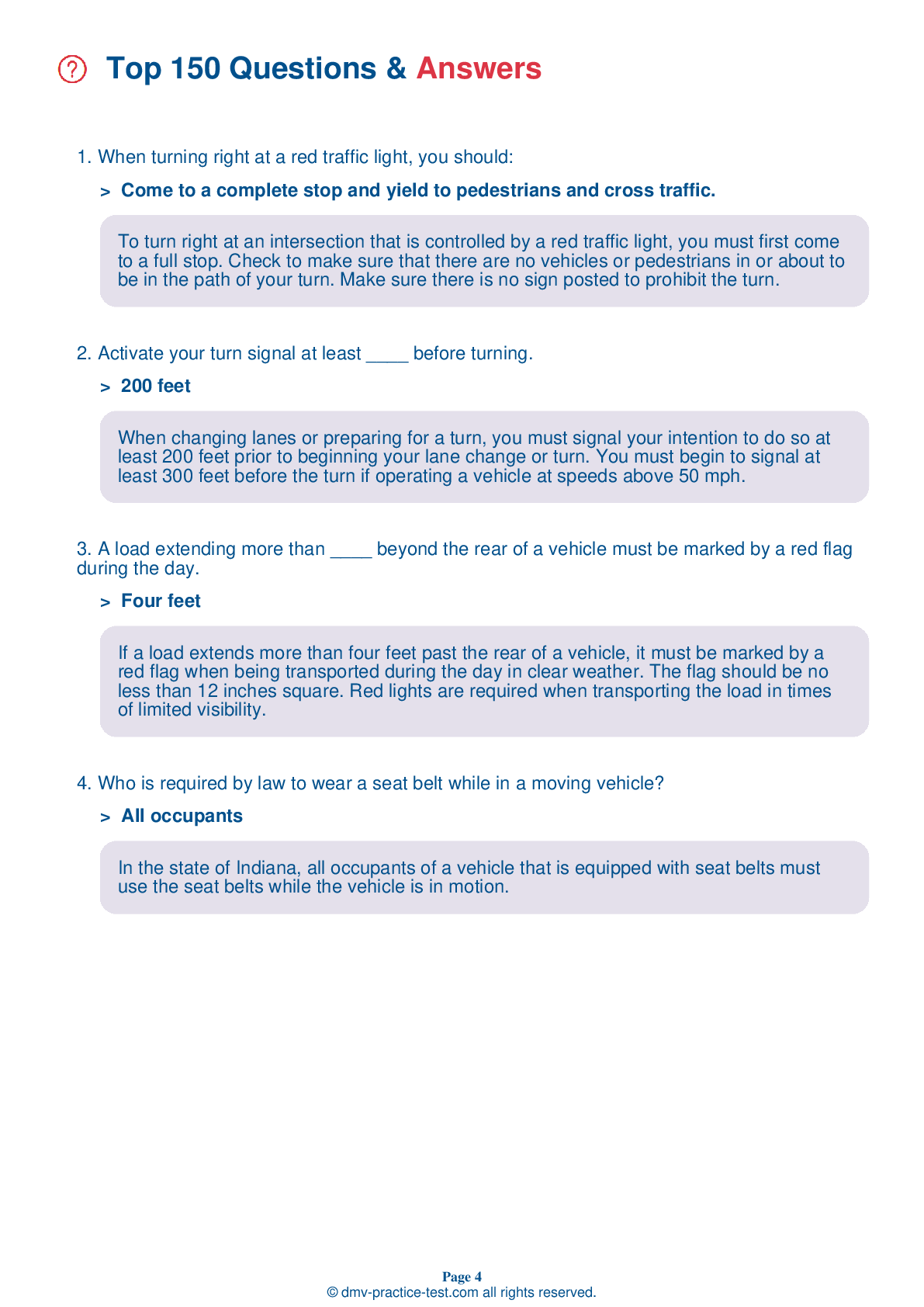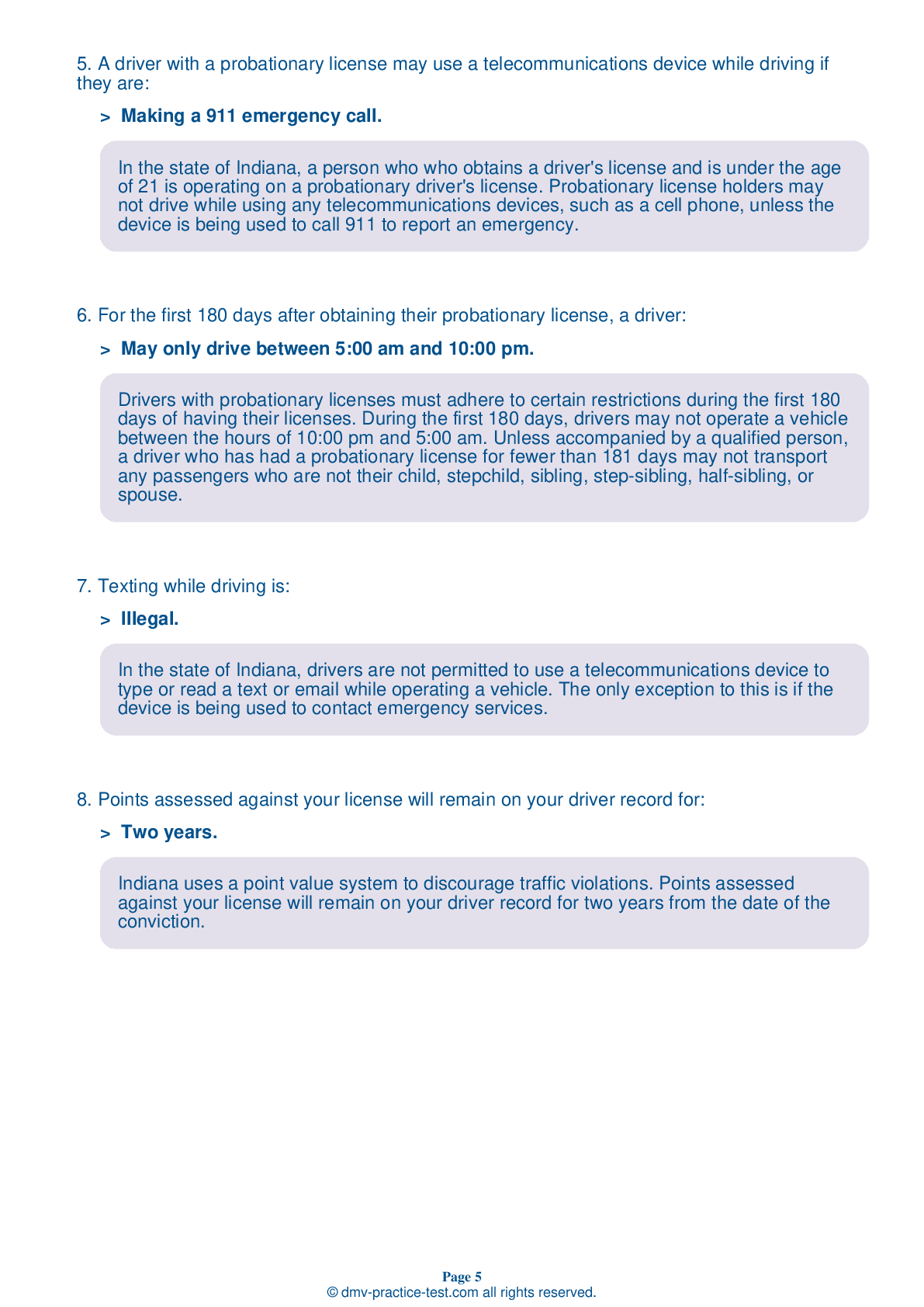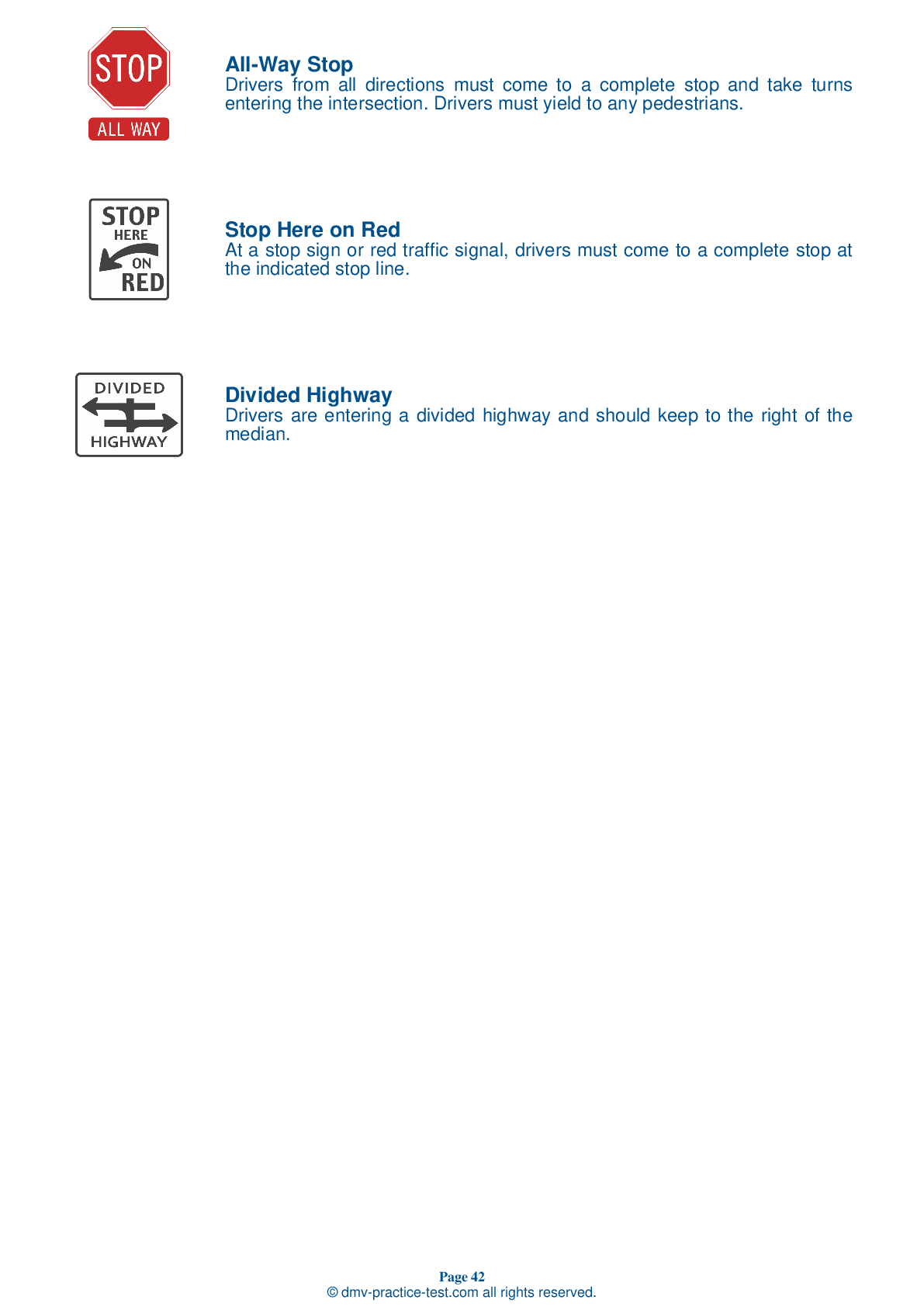FREE Indiana DMV Practice Test #12 Page 2 of 5
This set of Indiana DMV practise tests has been updated for January 2025. It includes questions based on the Indiana Driver Handbook's most significant traffic signals and laws for 2025. Use actual questions that are very similar (often identical!) to the DMV driving permit test and driver's licence exam to study for the DMV driving permit test and driver's licence exam.
On the practise exam, each question gets a tip and explanation to help you remember the concepts. The written component of the official Indiana DMV test will include questions about traffic rules, traffic signs, and driving statutes, as well as information from the Driver Handbook.
To obtain a passing grade, you must correctly answer 44 of the 50 questions. Take our DMV practise exam to help you prepare for your Indiana instruction permit or driver's licence.
The DMV exam is available in several languages.
Using any kind of testing assistance will result in an automatic fail, and the DMV may take additional action against your driver's licence, so stay away from it.
9 . If an officer is directing traffic at a working traffic light, drivers should:
Traffic signals are placed at intersections to keep traffic moving and to help prevent crashes. Drivers, pedestrians, and cyclists must obey these signals, except in instances when an officer is directing traffic.
10 . This sign means:
